What Is Cloud Bread?
Cloud bread is a light, fluffy, and versatile bread Recipe alternative that has gained immense popularity in the world of low-carb and gluten-free diets. Its airy texture and minimal ingredients make it an excellent choice for those looking to cut back on traditional bread without sacrificing flavor or satisfaction. Whether you’re following a keto lifestyle or exploring healthy baking options, this bread can be a game-changer. Historically, cloud bread has roots in low-carb communities and was embraced as part of the Atkins diet. Over time, its appeal has spread, thanks to its ease of preparation and suitability for various dietary needs. For a step-by-step guide to making cloud bread, check out Delish’s detailed recipe.
Why Try Cloud Bread?
- Low-Carb Wonder: With less than 1 gram of carbs per serving, cloud bread is a guilt-free option for carb-conscious eaters.
- Gluten-Free Goodness: Its naturally gluten-free composition makes it perfect for those with sensitivities or allergies.
- Quick and Easy to Make: Requiring just three core ingredients, this recipe is straightforward and beginner-friendly.
- Versatility in Use: Cloud bread works as a substitute for sandwich buns, pizza crusts, or even a snack on its own.
For more inspiration on how to use this bread, explore Food Network’s innovative ideas. They showcase creative ways to elevate this recipe with savory and sweet adaptations. Adding cloud bread to your meal plan offers a healthier and more flexible alternative to traditional options. Its light texture and adaptability make it a favorite among health enthusiasts, chefs, and home bakers alike. Whether you’re pairing it with avocado or topping it with cinnamon, the possibilities are endless.
Cloud Bread Recipe
Print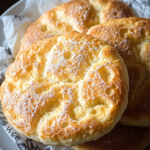
Cloud Bread Recipe
- Total Time: 40 minutes
- Yield: 6 pieces 1x
- Diet: Gluten Free
Description
A simple, low-carb, fluffy bread that’s perfect for keto, gluten-free, and low-calorie diets.
Ingredients
- Cooking spray
- 3 large eggs, room temperature
- 1/4 teaspoon cream of tartar
- 2 ounces cream cheese, room temperature
- 1/8 teaspoon kosher salt
Instructions
- Preheat oven to 300°F (150°C) and line a baking sheet with parchment paper. Lightly spray with cooking spray.
- Separate egg whites and yolks into two clean bowls.
- Add cream of tartar to the whites and whip until stiff peaks form.
- In another bowl, beat the egg yolks, cream cheese, and salt until smooth.
- Gently fold the egg yolk mixture into the whipped egg whites until just combined.
- Scoop the batter onto the prepared baking sheet into small mounds. Flatten slightly to form round shapes.
- Bake for 25–30 minutes, or until golden brown and firm to the touch.
- Cool on the baking sheet for 10 minutes before transferring to a wire rack.
Notes
- Ensure the eggs are at room temperature for easier whipping.
- Cloud bread is best enjoyed fresh but can be stored for later use.
- Prep Time: 10 minutes
- Cook Time: 30 minutes
- Category: Bread, Snack
- Method: Baking
- Cuisine: American
Nutrition
- Serving Size: 1 piece
- Calories: 45
- Sugar: 0g
- Sodium: 100mg
- Fat: 3.5g
- Saturated Fat: 2g
- Unsaturated Fat: 1g
- Trans Fat: 0g
- Carbohydrates: 0.5g
- Fiber: 0g
- Protein: 3g
- Cholesterol: 75mg
Keywords: Cloud Bread Recipe
For more creative tips on baking cloud bread, visit Allrecipes’ cloud bread guide.
Steps
Step 1
Gather all the ingredients
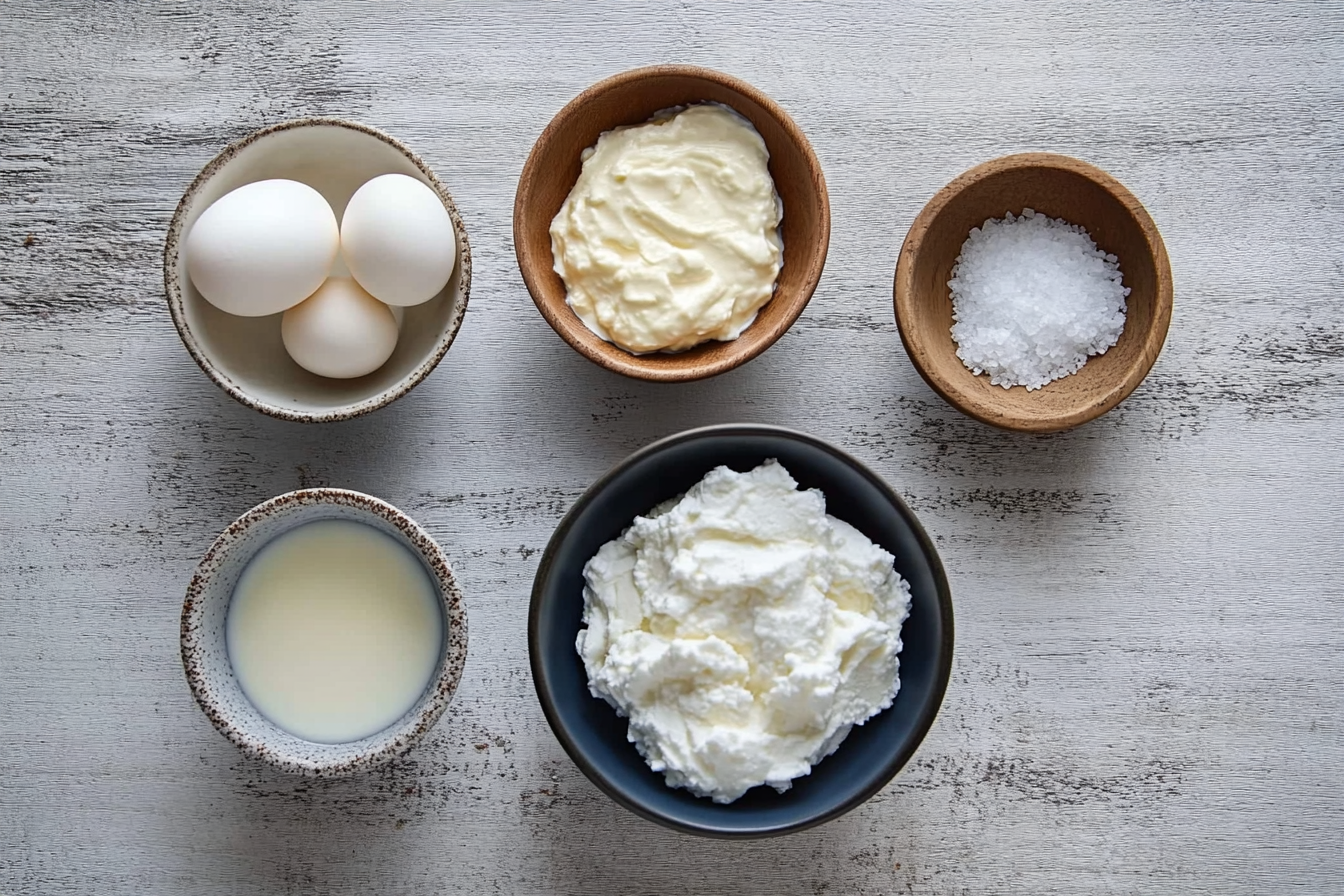
Step 2
Preheat the oven to 300°F. Prepare a baking sheet by lining it with a silicone mat or parchment paper, then lightly coat it with cooking spray.
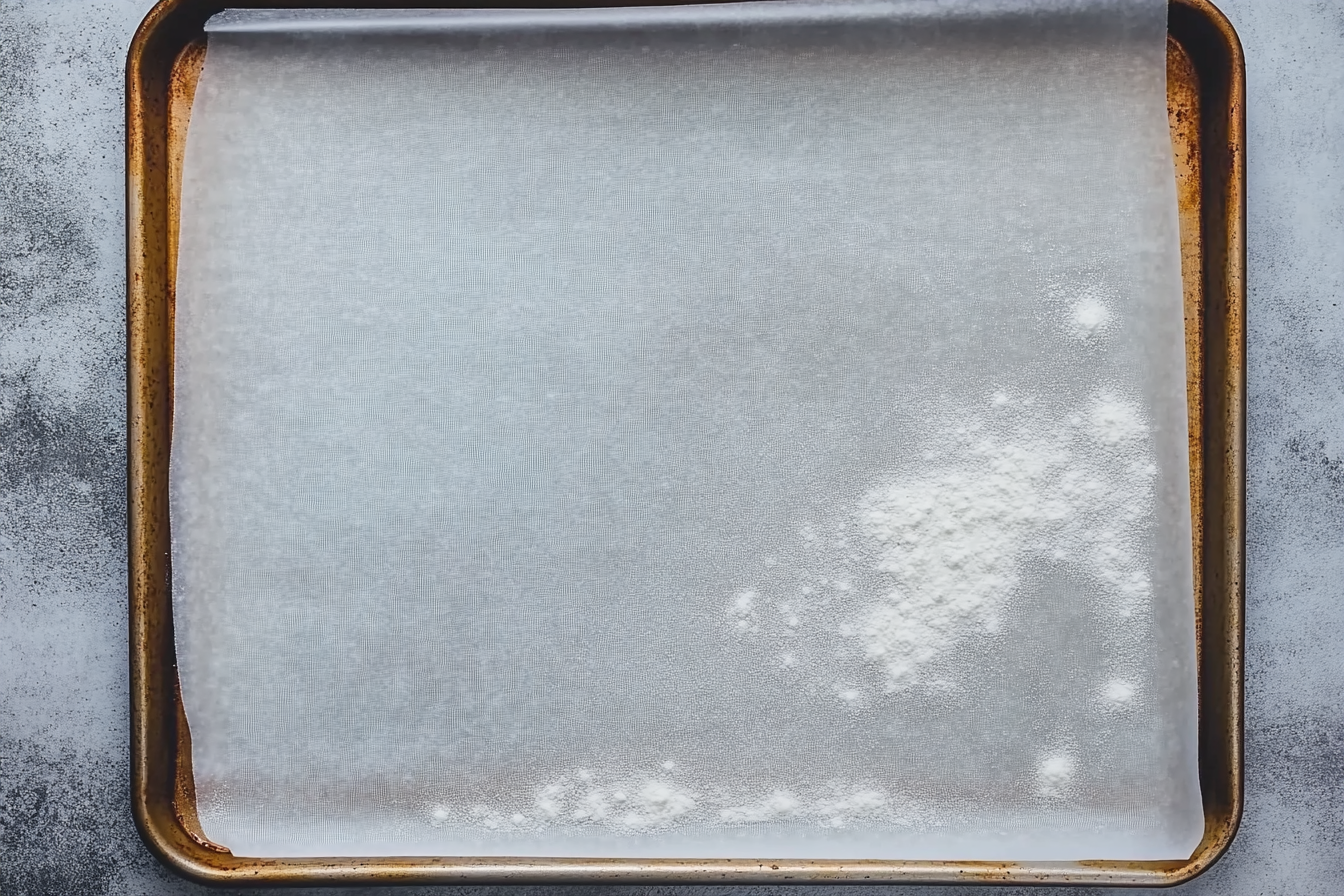
Step 3
Separate the eggs, placing the egg whites in one mixing bowl and the egg yolks in another.
Step 4
Add the cream of tartar to the egg whites. Using a hand mixer, beat the whites until stiff peaks form, which should take about 5 minutes. When you dip a beater into the egg whites and pull it out, the peak should stand upright. Be careful not to over-beat the egg whites, as this will make them crumbly.
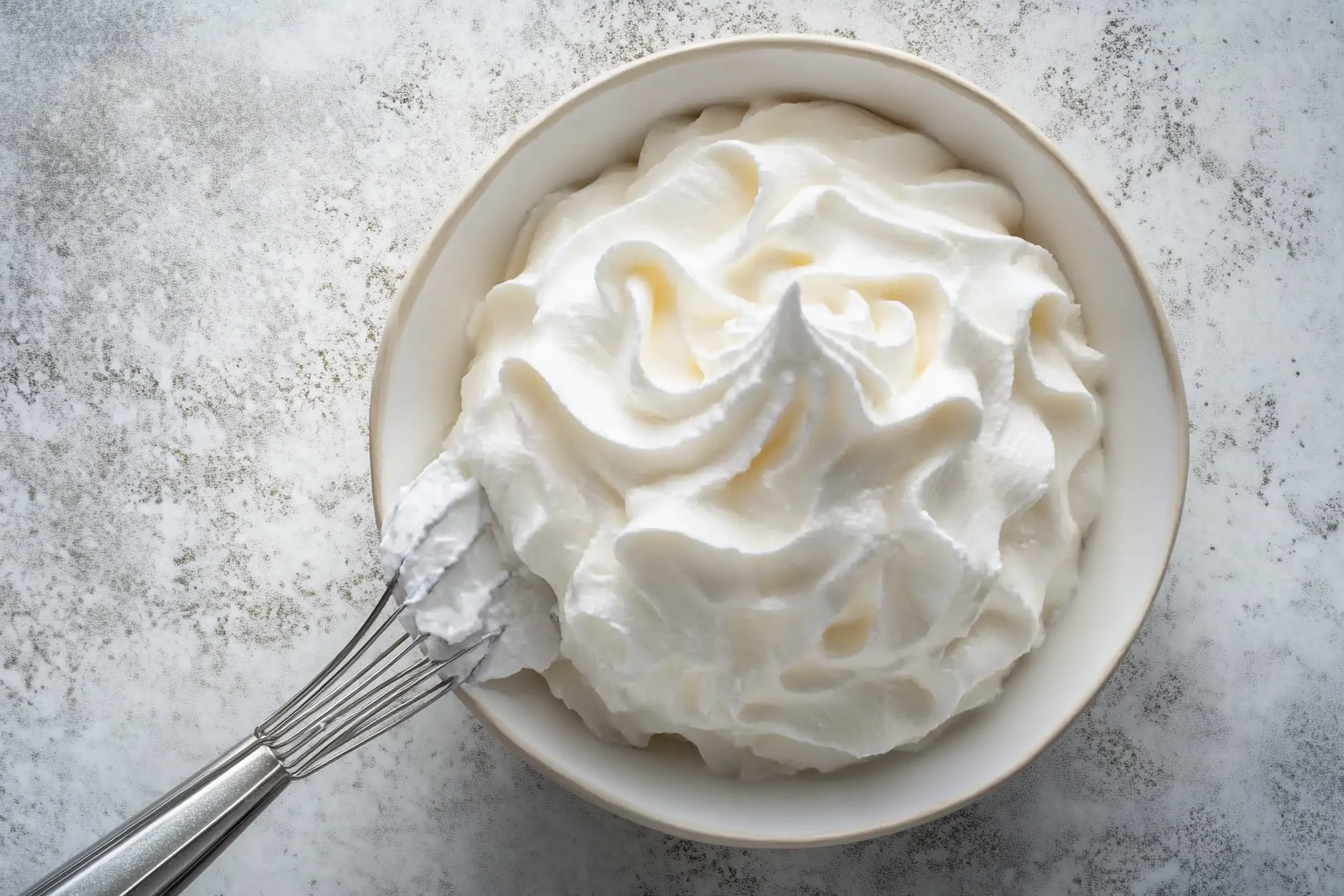
Step 5
Add the cream cheese and salt to the bowl with the egg yolks. Beat the mixture until smooth and well combined.
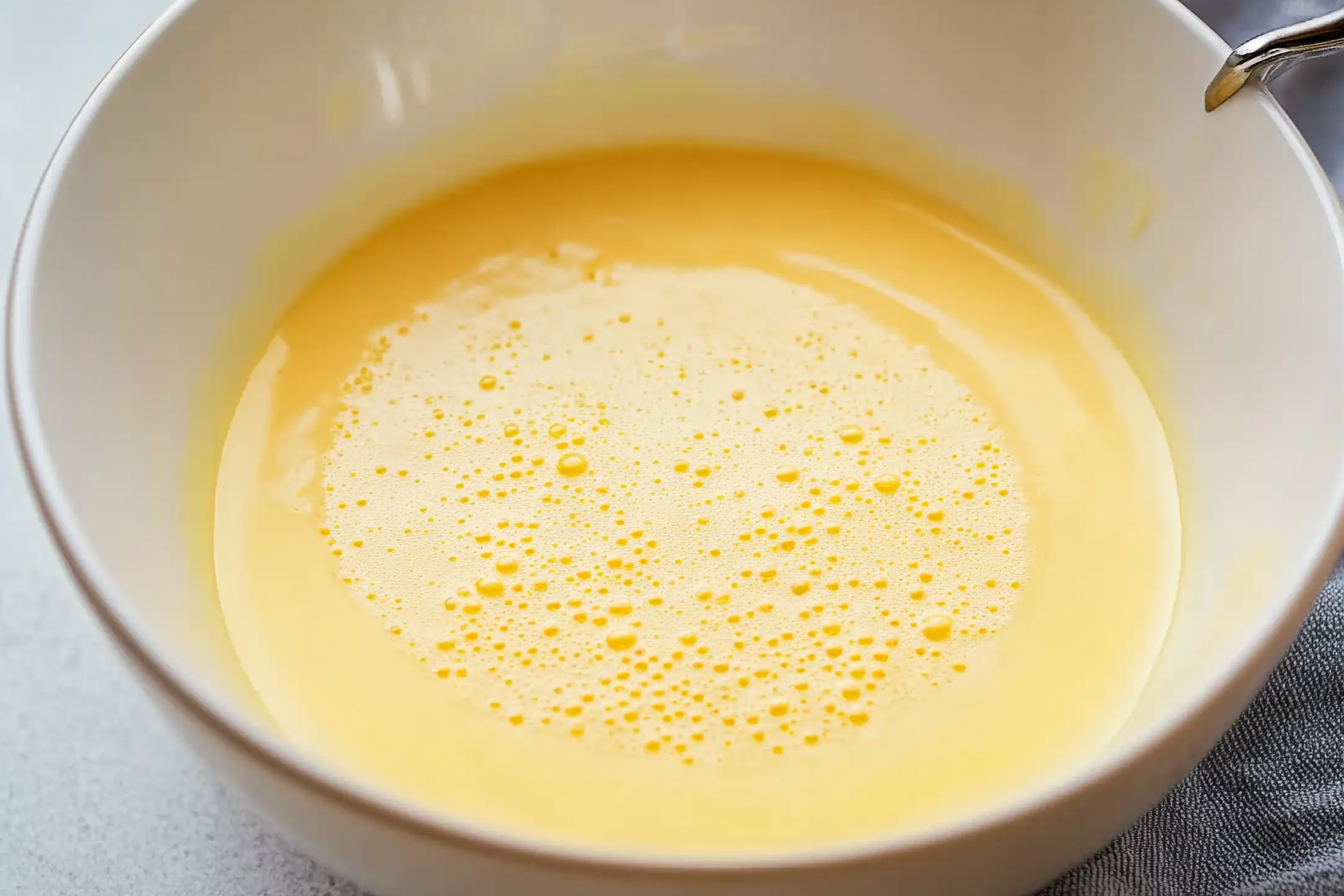
Step 6
Carefully add about 1/3 of the beaten egg whites to the yolk mixture. Gently fold the two mixtures together, taking care not to deflate the egg whites. Repeat this process with the remaining egg whites, folding just until the mixture is combined.
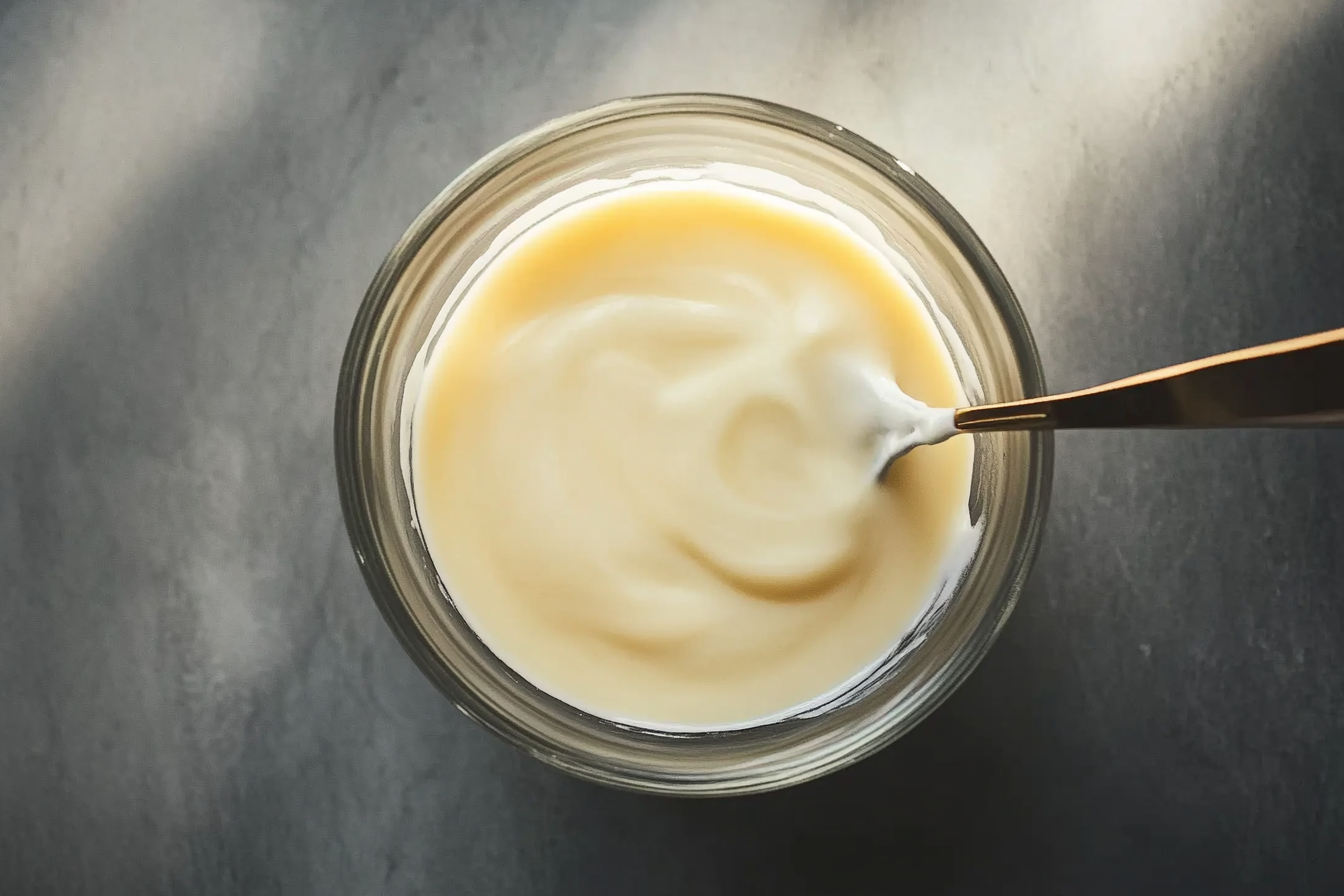
Step 7
Scoop the mixture into 6 to 9 separate disks (depending on your preferred size) onto the prepared baking sheet, ensuring they are spaced at least 2 to 3 inches apart.
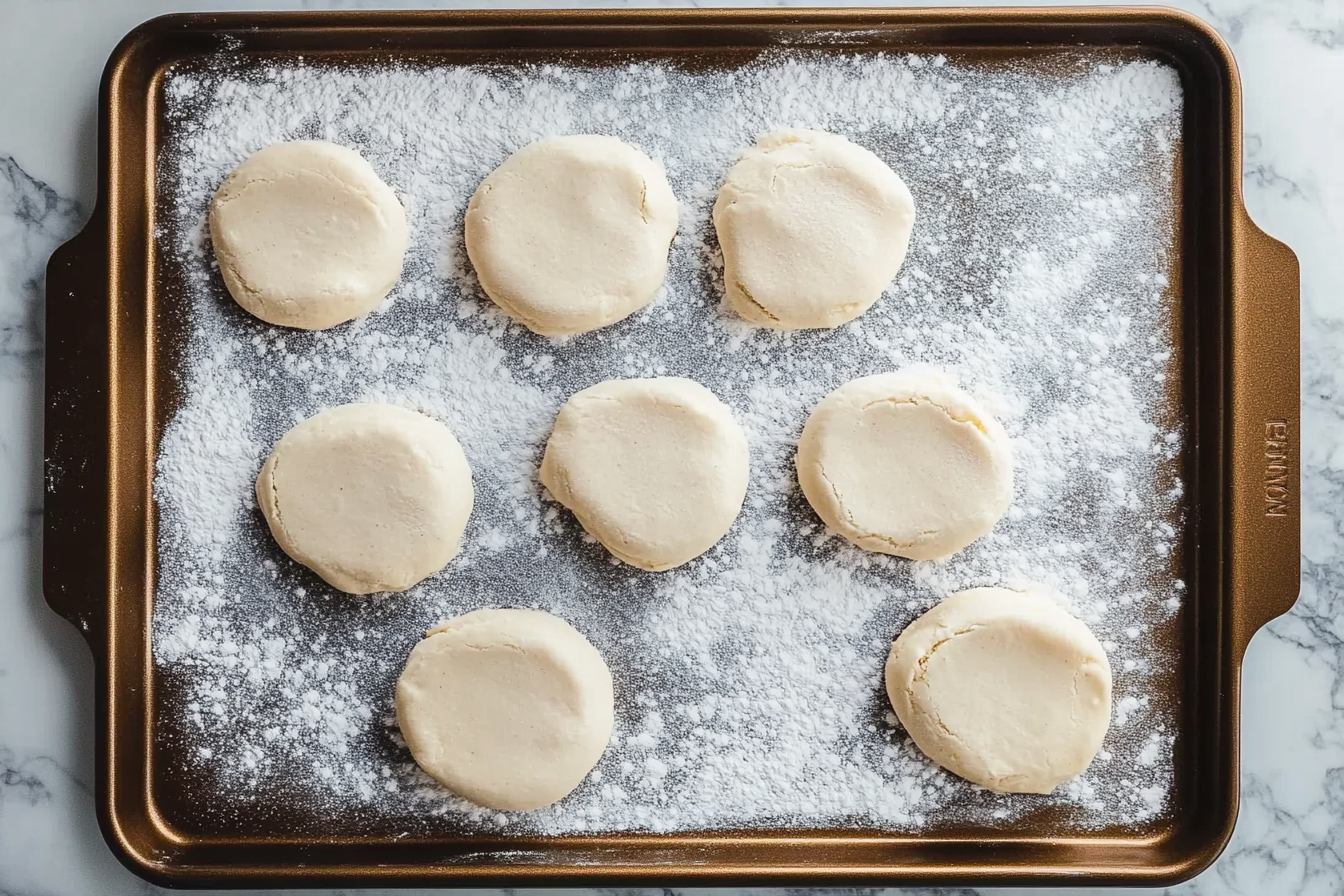
Step 8
Bake for 25 to 35 minutes, depending on the size of your cloud bread, or until they turn golden brown. Start checking around the 25-minute mark, as they can overcook quickly.
Step 9
Let the cloud bread cool for a few minutes on the baking sheet before transferring it to a cooling rack. Store any leftovers in an airtight container for up to 3 days, or freeze for longer storage.

Advanced Techniques and Tips for Perfect Cloud Bread Recipe
Whipping Egg Whites to Stiff Peaks
Achieving stiff peaks is crucial for making cloud bread light and fluffy. Start by ensuring your mixing bowl and beaters are completely clean and dry. Any grease or residue can prevent the egg whites from whipping properly. Whip at medium speed first, then increase to high until you see firm peaks that hold their shape.
Folding Without Deflating
Gently folding the egg yolk mixture into the whipped egg whites helps maintain the airy texture. Use a spatula and a light hand, moving in a circular motion from the bottom of the bowl to the top. Avoid overmixing, as this will cause the batter to lose its structure.
Adding Flavor Variations
Elevate your cloud bread by incorporating simple flavor additions. For savory options, try mixing in garlic powder, onion powder, or freshly chopped herbs like rosemary or parsley. For a sweet twist, add a pinch of cinnamon or vanilla extract to the yolk mixture. These enhancements keep your bread versatile and exciting.
Shaping for Consistency
For evenly sized pieces, use a cookie scoop or spoon to portion the batter onto your baking sheet. Flatten each mound slightly for a uniform shape, ensuring even baking.
Troubleshooting Common Issues
If your cloud bread turns out flat, it’s likely due to under-whipped egg whites or overmixing. A dense texture may result from insufficient folding technique. Following these tips will help you achieve the perfect texture every time.
By mastering these techniques, your cloud bread will not only look professional but also taste better with every bake.
Explore Mobolux, for even more ways to perfect your recipe.
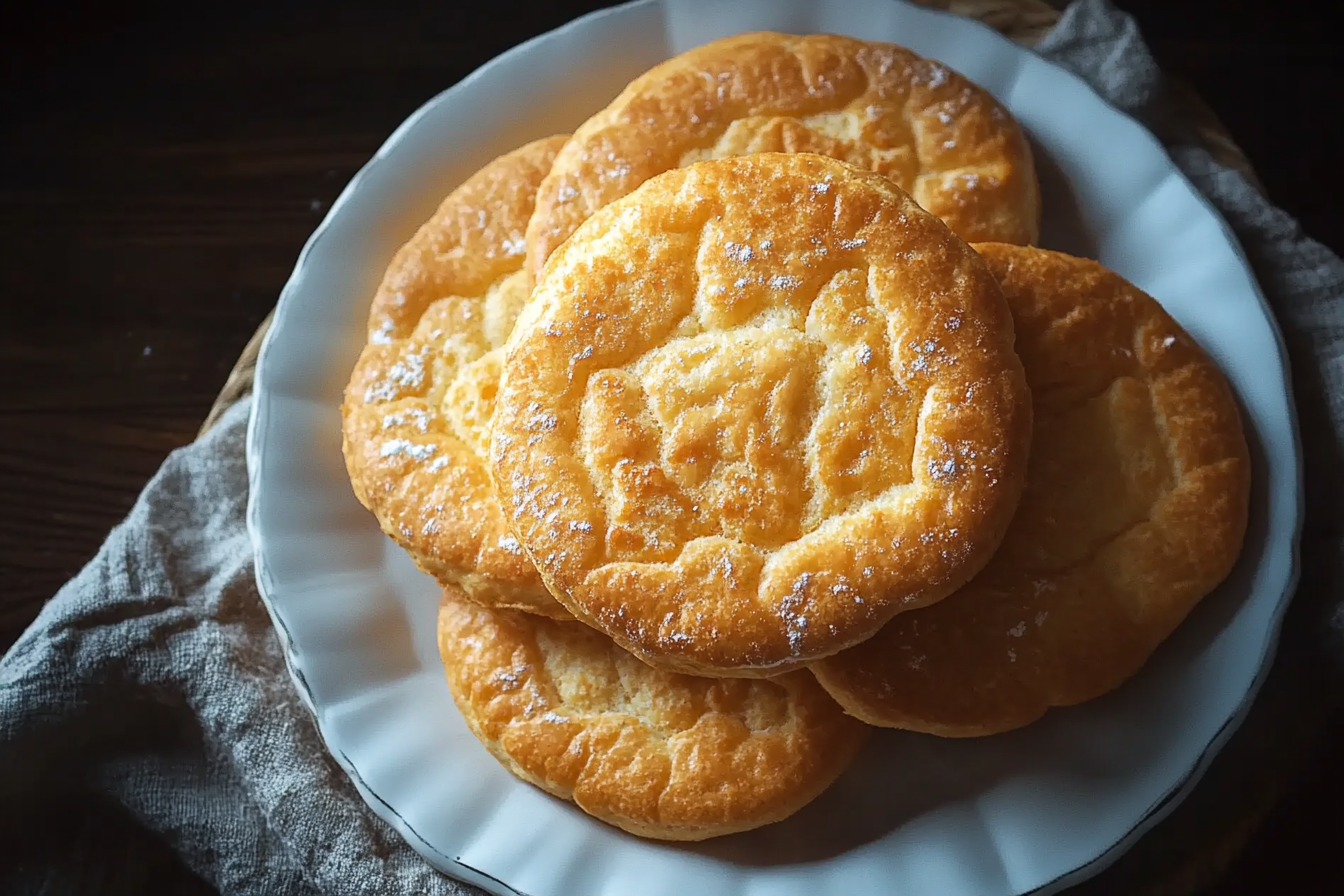
Storage, Maintenance, and Reheating Tips
Short-Term Storage
Storing cloud bread properly is key to maintaining its light and fluffy texture. Once the bread has cooled completely, place it in an airtight container or resealable plastic bag. Keep it at room temperature if you plan to use it within 24 hours. This ensures the bread stays soft and fresh without drying out.
Long-Term Storage
For longer storage, freezing is an excellent option. First, layer parchment paper between each piece of cloud bread to prevent sticking. Then, store the bread in a freezer-safe bag or container, squeezing out as much air as possible before sealing. When stored this way, cloud bread can last up to two months without losing its texture or flavor.
Reheating Tips
Reheating cloud bread can be tricky, but it’s simple with the right approach. To warm it gently, use an oven or toaster set to low heat, around 300°F (150°C). Avoid using the microwave, as it can make the bread rubbery. For frozen bread, thaw it at room temperature for about 20 minutes before reheating to ensure even warming.
Common Mistakes to Avoid
- Overexposure to Air: Leaving cloud bread uncovered can dry it out quickly, making it lose its soft texture.
- Using High Heat for Reheating: This can cause the bread to become hard or overly crispy, which is not ideal for its intended texture.
- Skipping Cooling Time: Always let cloud bread cool completely before storing to prevent excess moisture buildup, which can lead to sogginess.
By following these tips, you can enjoy perfectly fluffy and delicious cloud bread anytime, whether fresh or reheated.
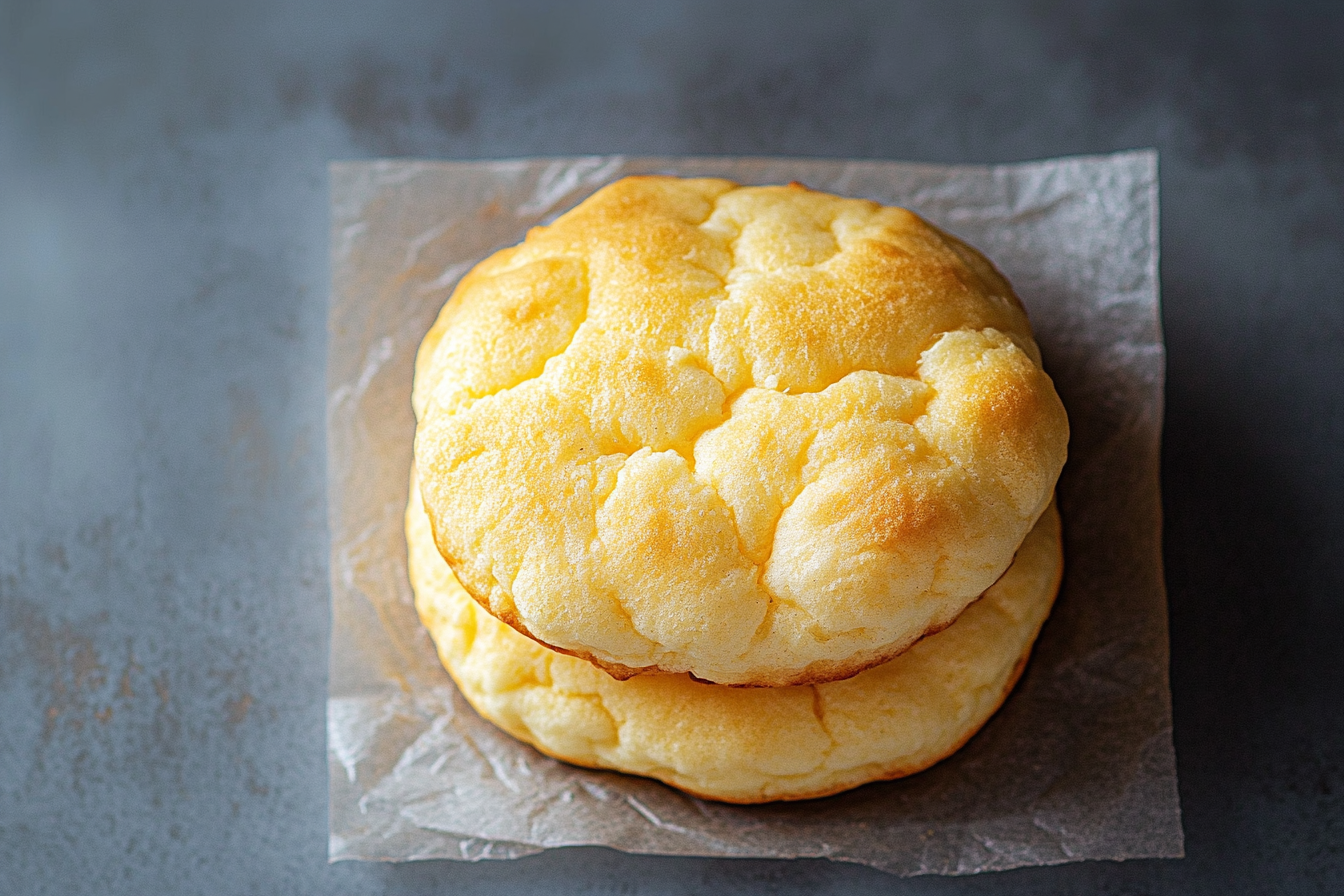
Dietary Adaptations and Modifications for Cloud Bread
Low-Carb and Keto-Friendly Cloud Bread Recipe
Cloud bread is inherently low in carbs, making it ideal for keto and low-carb diets. However, you can further customize the recipe to meet stricter dietary needs. Substitute the cream cheese with mascarpone or a low-carb dairy-free alternative for an even lighter option. Adding a touch of almond flour can help improve the structure while keeping it keto-friendly.
Gluten-Free Variations Cloud Bread Recipe
Since cloud bread contains no flour, it is naturally gluten-free. To ensure a completely gluten-free preparation, check that all your ingredients, such as cream of tartar and cooking spray, are certified gluten-free. This precaution prevents cross-contamination and ensures the recipe is safe for individuals with gluten sensitivities or celiac disease.
Dairy-Free Modifications
For those avoiding dairy, you can easily adapt cloud bread by using plant-based cream cheese or a thick coconut cream. These substitutes maintain the texture while catering to a dairy-free diet. A pinch of nutritional yeast can also add a cheesy flavor without the need for dairy products.
Vegetarian and Paleo Options
Cloud bread naturally aligns with vegetarian diets, as it relies on eggs for structure and protein. For a paleo adaptation, ensure the cream cheese or its substitute adheres to paleo guidelines, such as almond-based cream cheese.
Additional Nutritional Boosts
To make your cloud bread even healthier, consider adding chia seeds, flaxseeds, or a pinch of turmeric to the batter. These additions not only enhance the flavor but also increase the nutritional value. With these simple tweaks, cloud bread can easily fit into a wide variety of dietary preferences while maintaining its signature light and airy texture.
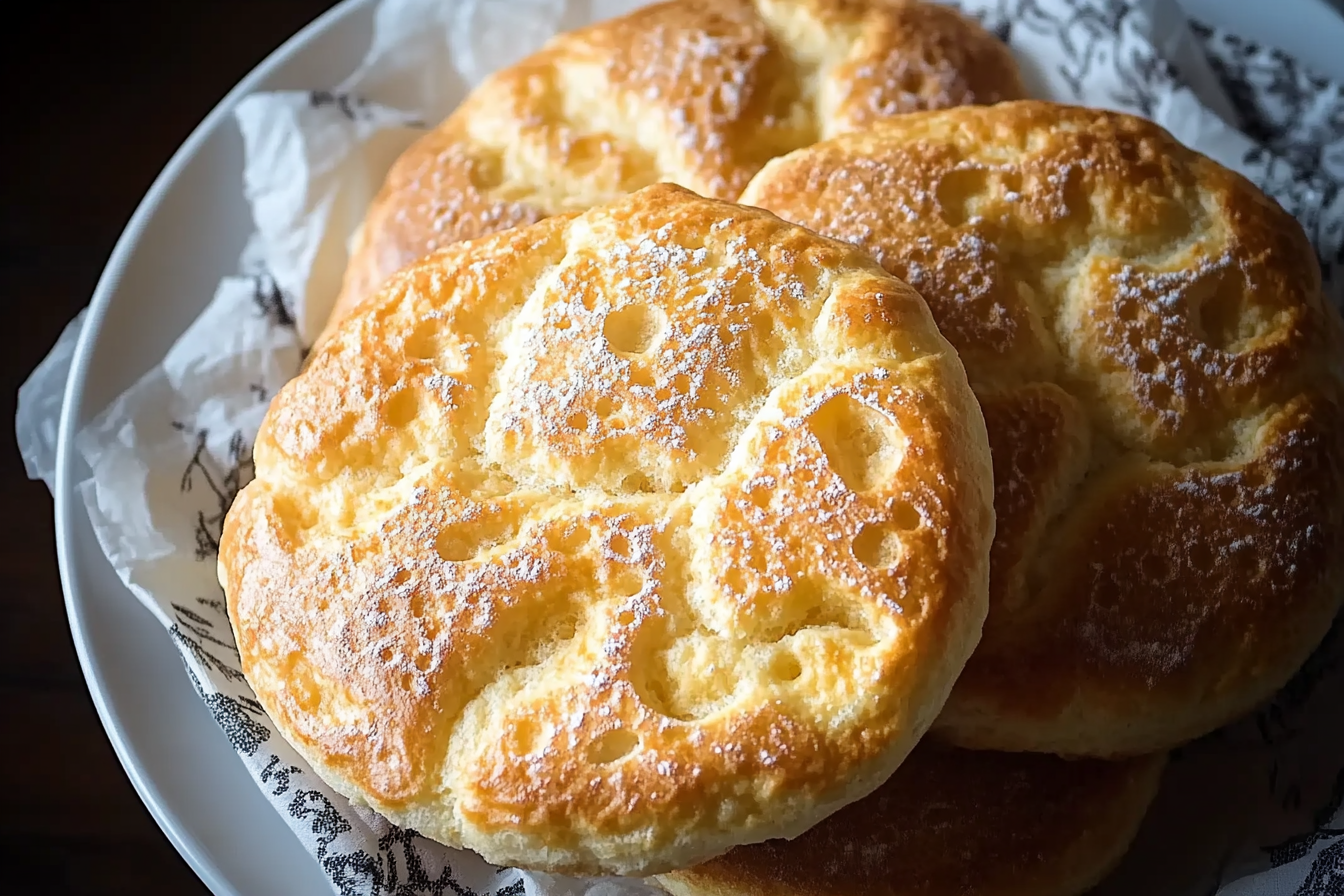
Frequently Asked Questions (FAQs)
What Makes Cloud Bread Different From Traditional Bread?
Cloud bread stands out for its light, airy texture and its low-carb, gluten-free nature. Unlike traditional bread, it doesn’t contain flour or yeast, making it a healthier option for those with dietary restrictions or looking to reduce carb intake.
Can Cloud Bread Be Made Ahead of Time?
Yes, cloud bread can be prepared in advance. Store it in an airtight container for up to 24 hours at room temperature, or freeze it for up to two months. Just ensure it’s completely cooled before storing to maintain its texture.
Is Cloud Bread Suitable for Keto and Gluten-Free Diets?
Absolutely! With minimal carbs and no gluten, cloud bread is a fantastic choice for keto and gluten-free lifestyles. Always double-check ingredient labels to ensure compliance with specific dietary needs.
Why Is My Cloud Bread Flat or Dense?
Flat or dense cloud bread often results from under-whipping the egg whites or overmixing the batter. To avoid this, ensure the egg whites are beaten to stiff peaks and fold the mixtures together gently to retain the airy texture.
Can I Add Other Ingredients to Customize Cloud Bread?
Definitely! Add herbs, spices, or sweeteners like vanilla extract or cinnamon for flavor variations. However, avoid adding too much liquid, as it can affect the structure.
How Do I Reheat Cloud Bread Without Losing Texture?
To reheat cloud bread, use an oven or toaster set to low heat. Avoid the microwave, as it can make the bread rubbery.
These common questions help demystify cloud bread and ensure success in making and enjoying this versatile recipe.
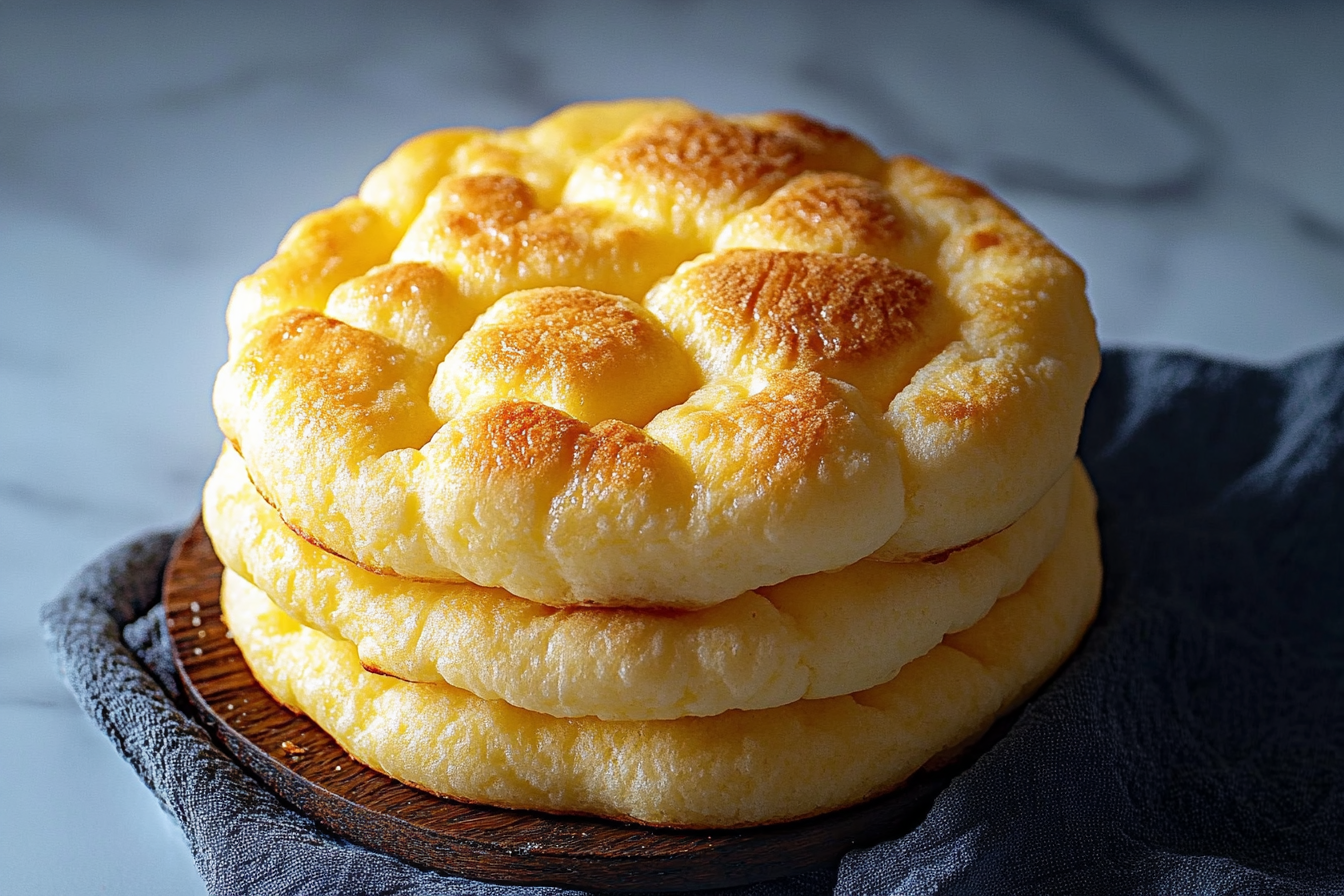
Conclusion: Why Cloud Bread is a Must-Try
A Game-Changer for Healthy Eating
Cloud bread is not only a fantastic alternative to traditional bread, but it also opens up new possibilities for healthier eating. With its low-carb and gluten-free nature, it provides a delicious, guilt-free option for those looking to enjoy bread-like textures without the added calories and carbs.
Easy, Versatile, and Adaptable
One of the most appealing aspects of cloud bread is its versatility. Whether used as a sandwich base, a pizza crust, or a simple snack, it easily adapts to various dietary needs. You can experiment with sweet or savory flavors, making it a meal component that never gets boring.
Perfect for a Range of Diets
From keto to gluten-free to dairy-free, cloud bread accommodates a wide range of diets. With simple ingredient swaps, this recipe can be tailored to meet specific dietary preferences and needs. It’s a flexible choice for anyone, whether you’re on a restricted diet or just looking for healthier options.
The Joy of Homemade Bread
Creating your own cloud bread at home is both satisfying and rewarding. With minimal ingredients and easy-to-follow steps, you can enjoy fresh, homemade bread that’s free of additives or preservatives. Plus, you’ll love the light texture and flavor that store-bought alternatives can’t quite match.
In conclusion, cloud bread is more than just a trend. It’s a healthier, customizable, and easy-to-make option that fits into a variety of eating habits and lifestyles. Give it a try, and you may find that it becomes a staple in your kitchen.
